Abstract
Nearly all known biological warfare agents are intended for aerosol application. Although less effective as potable water threats, many are potentially capable of inflicting heavy casualties when ingested. Significant loss of mission capability can be anticipated even when complete recovery is possible. Properly maintained field army water purification equipment can counter this threat, but personnel responsible for the operation and maintenance of the equipment may be most at risk of exposure. Municipal water treatment facilities would be measurably less effective. Some replicating (infectious) agents and a few biotoxins are inactivated by chlorine disinfection; for others chlorine is ineffective or of unknown efficacy. This report assesses the state of our knowledge of agents as potable water threats and contemplates the consequences of intentional or collateral contamination of potable water supplies by 18 replicating agents and 9 biotoxins known or likely to be weaponized or otherwise used as threats.
Full text
PDF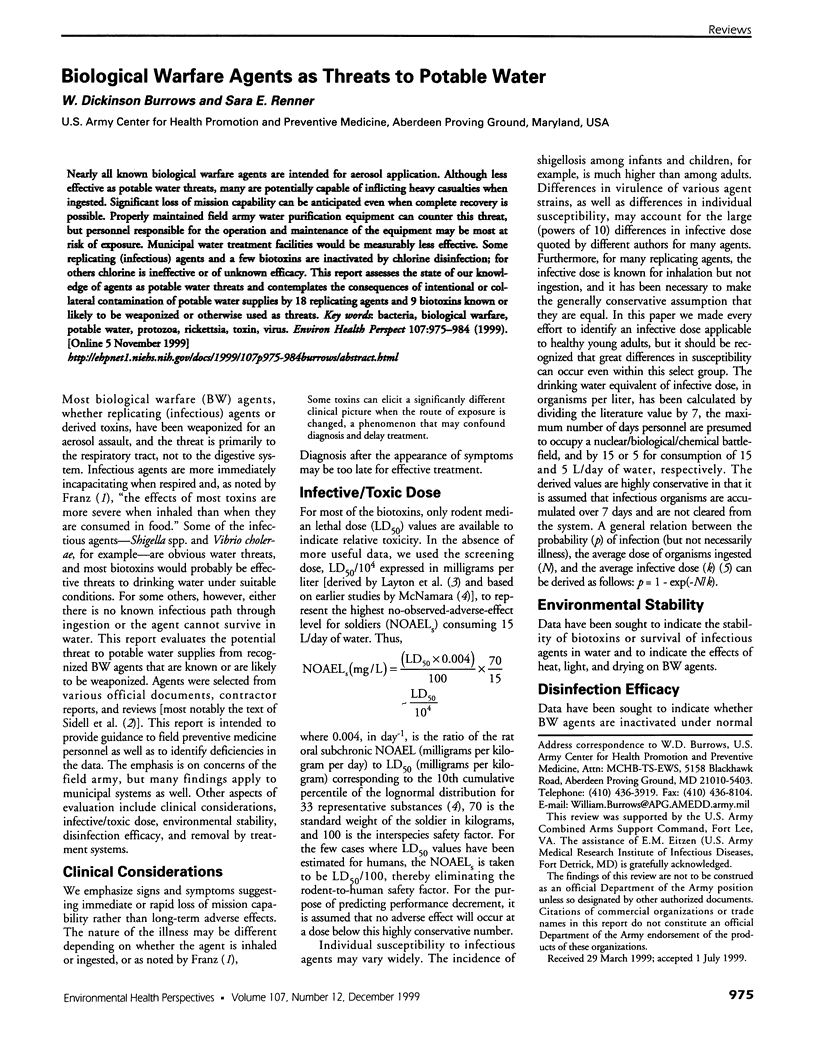

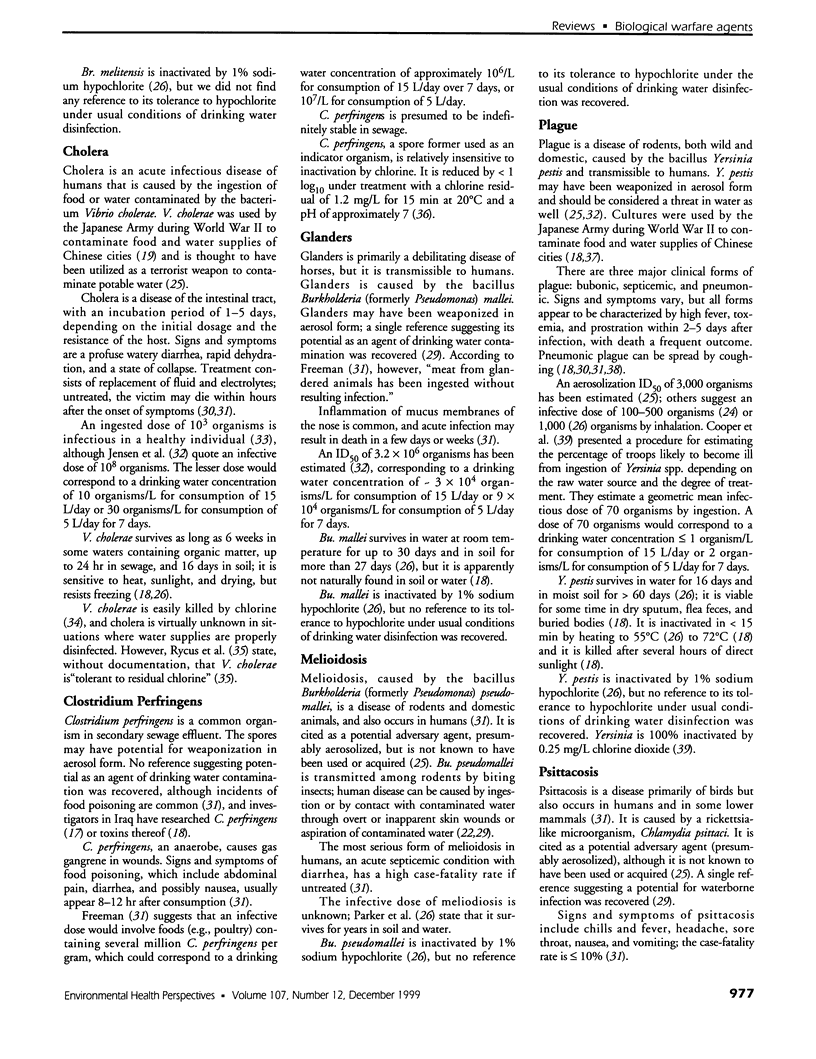
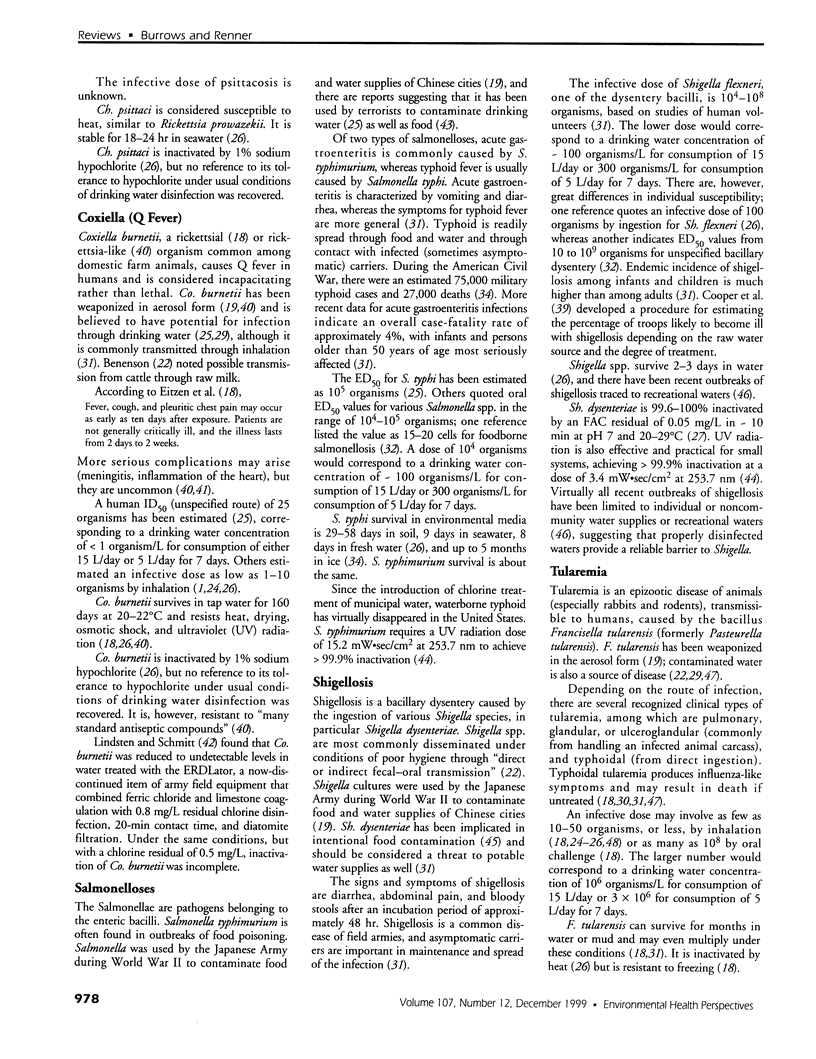
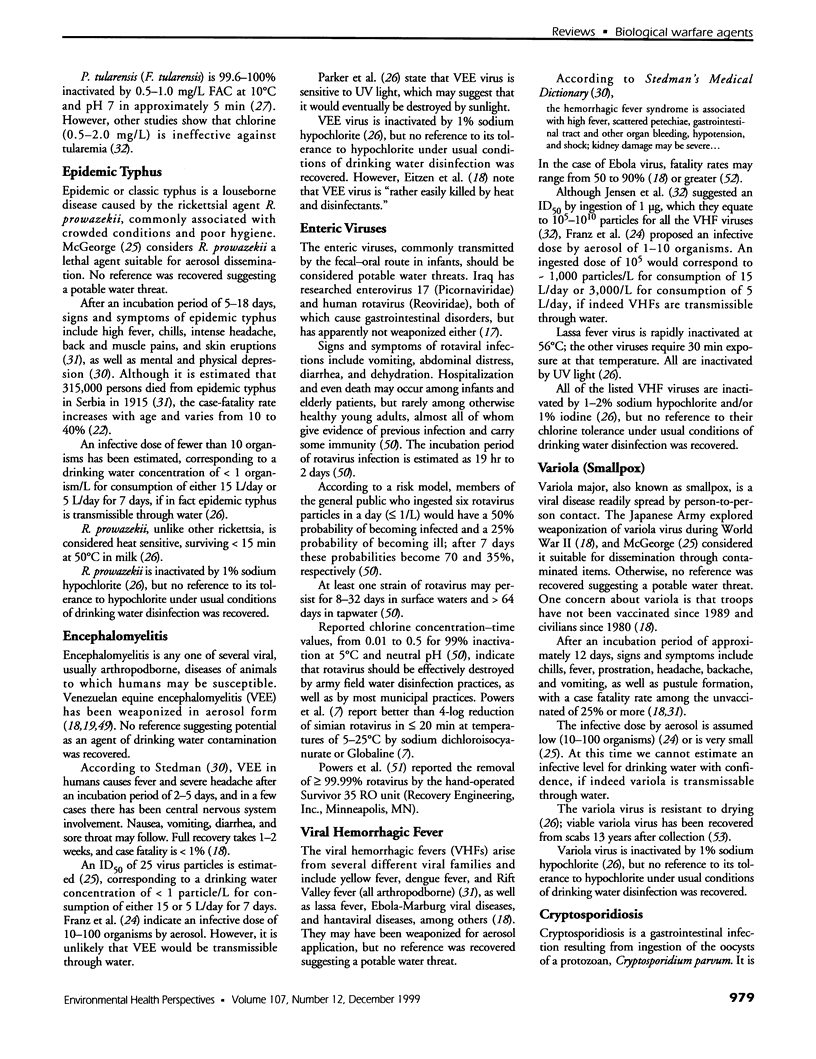
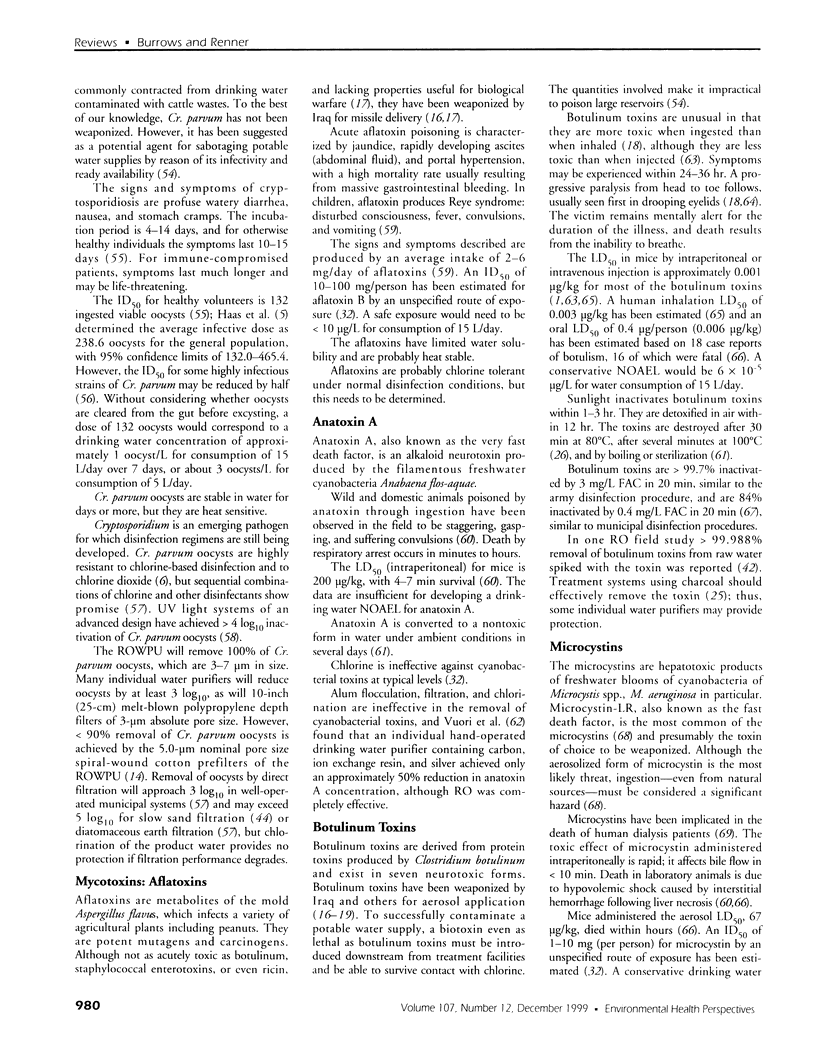
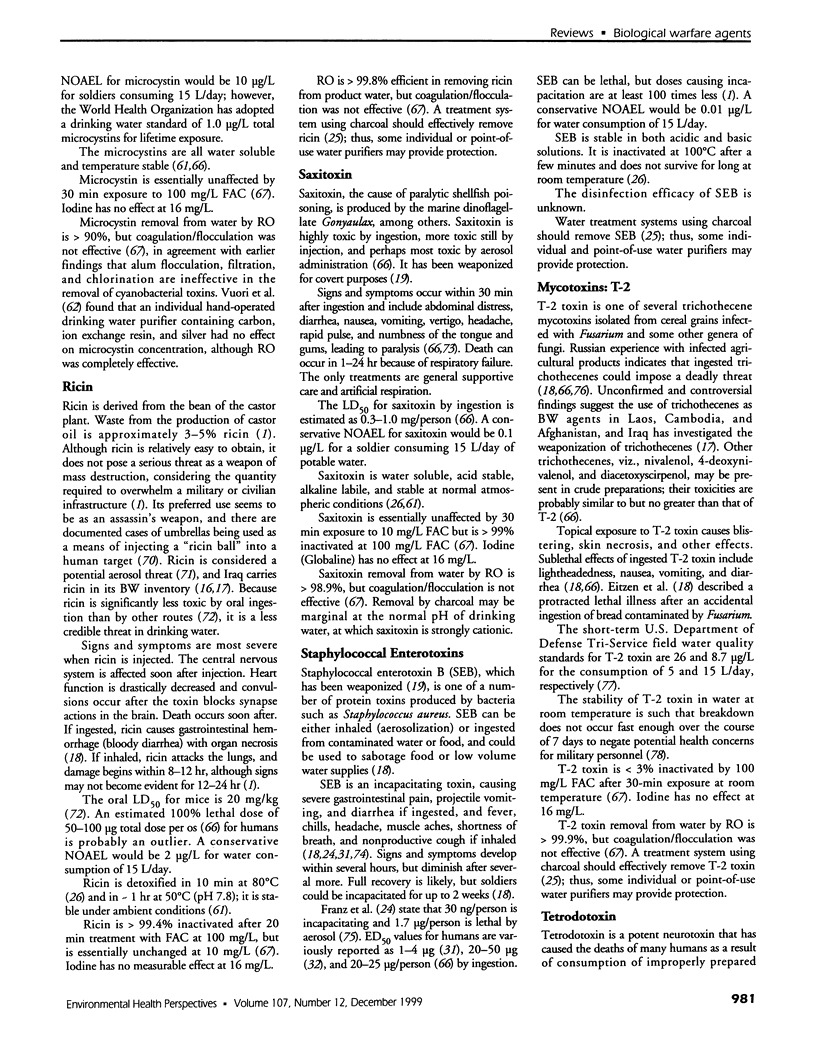

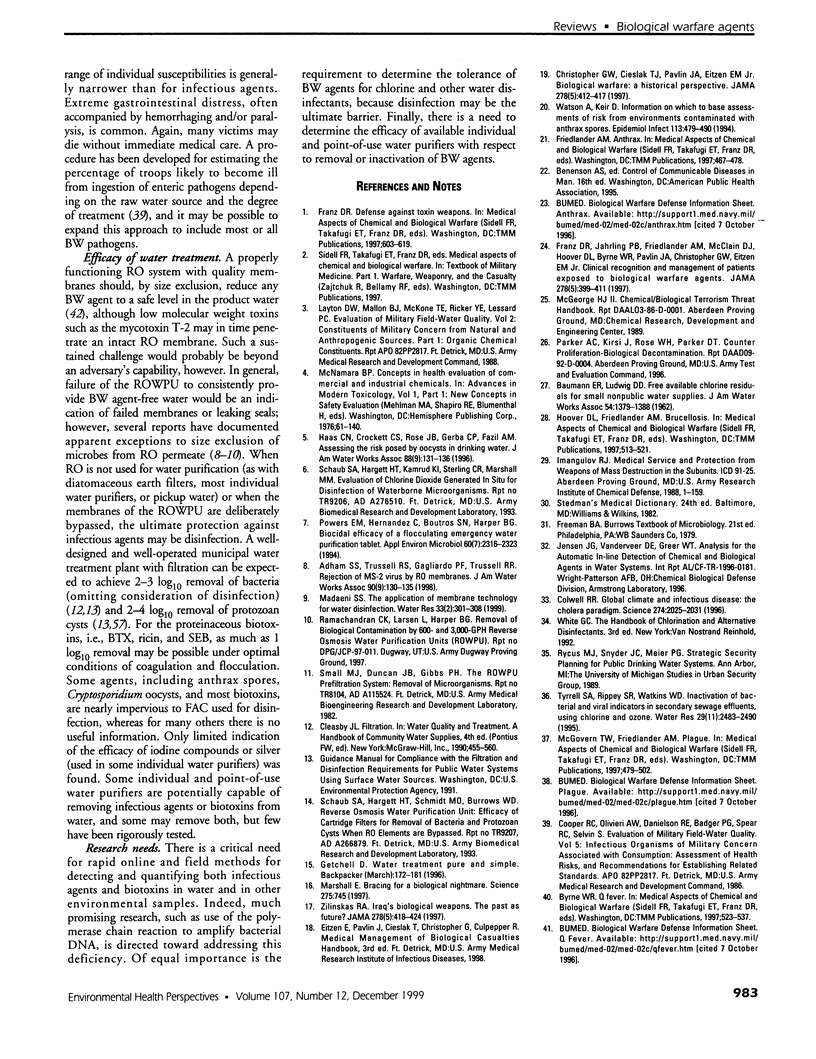

Selected References
These references are in PubMed. This may not be the complete list of references from this article.
- Christopher G. W., Cieslak T. J., Pavlin J. A., Eitzen E. M., Jr Biological warfare. A historical perspective. JAMA. 1997 Aug 6;278(5):412–417. [PubMed] [Google Scholar]
- Colwell R. R. Global climate and infectious disease: the cholera paradigm. Science. 1996 Dec 20;274(5295):2025–2031. doi: 10.1126/science.274.5295.2025. [DOI] [PubMed] [Google Scholar]
- Franz D. R., Jahrling P. B., Friedlander A. M., McClain D. J., Hoover D. L., Bryne W. R., Pavlin J. A., Christopher G. W., Eitzen E. M., Jr Clinical recognition and management of patients exposed to biological warfare agents. JAMA. 1997 Aug 6;278(5):399–411. doi: 10.1001/jama.278.5.399. [DOI] [PubMed] [Google Scholar]
- Gill D. M. Bacterial toxins: a table of lethal amounts. Microbiol Rev. 1982 Mar;46(1):86–94. doi: 10.1128/mr.46.1.86-94.1982. [DOI] [PMC free article] [PubMed] [Google Scholar]
- Kolavic S. A., Kimura A., Simons S. L., Slutsker L., Barth S., Haley C. E. An outbreak of Shigella dysenteriae type 2 among laboratory workers due to intentional food contamination. JAMA. 1997 Aug 6;278(5):396–398. [PubMed] [Google Scholar]
- Powers E. M., Hernandez C., Boutros S. N., Harper B. G. Biocidal efficacy of a flocculating emergency water purification tablet. Appl Environ Microbiol. 1994 Jul;60(7):2316–2323. doi: 10.1128/aem.60.7.2316-2323.1994. [DOI] [PMC free article] [PubMed] [Google Scholar]
- Simon J. D. Biological terrorism. Preparing to meet the threat. JAMA. 1997 Aug 6;278(5):428–430. doi: 10.1001/jama.278.5.428. [DOI] [PubMed] [Google Scholar]
- Török T. J., Tauxe R. V., Wise R. P., Livengood J. R., Sokolow R., Mauvais S., Birkness K. A., Skeels M. R., Horan J. M., Foster L. R. A large community outbreak of salmonellosis caused by intentional contamination of restaurant salad bars. JAMA. 1997 Aug 6;278(5):389–395. doi: 10.1001/jama.1997.03550050051033. [DOI] [PubMed] [Google Scholar]
- Watson A., Keir D. Information on which to base assessments of risk from environments contaminated with anthrax spores. Epidemiol Infect. 1994 Dec;113(3):479–490. doi: 10.1017/s0950268800068497. [DOI] [PMC free article] [PubMed] [Google Scholar]
- Zilinskas R. A. Iraq's biological weapons. The past as future? JAMA. 1997 Aug 6;278(5):418–424. [PubMed] [Google Scholar]


